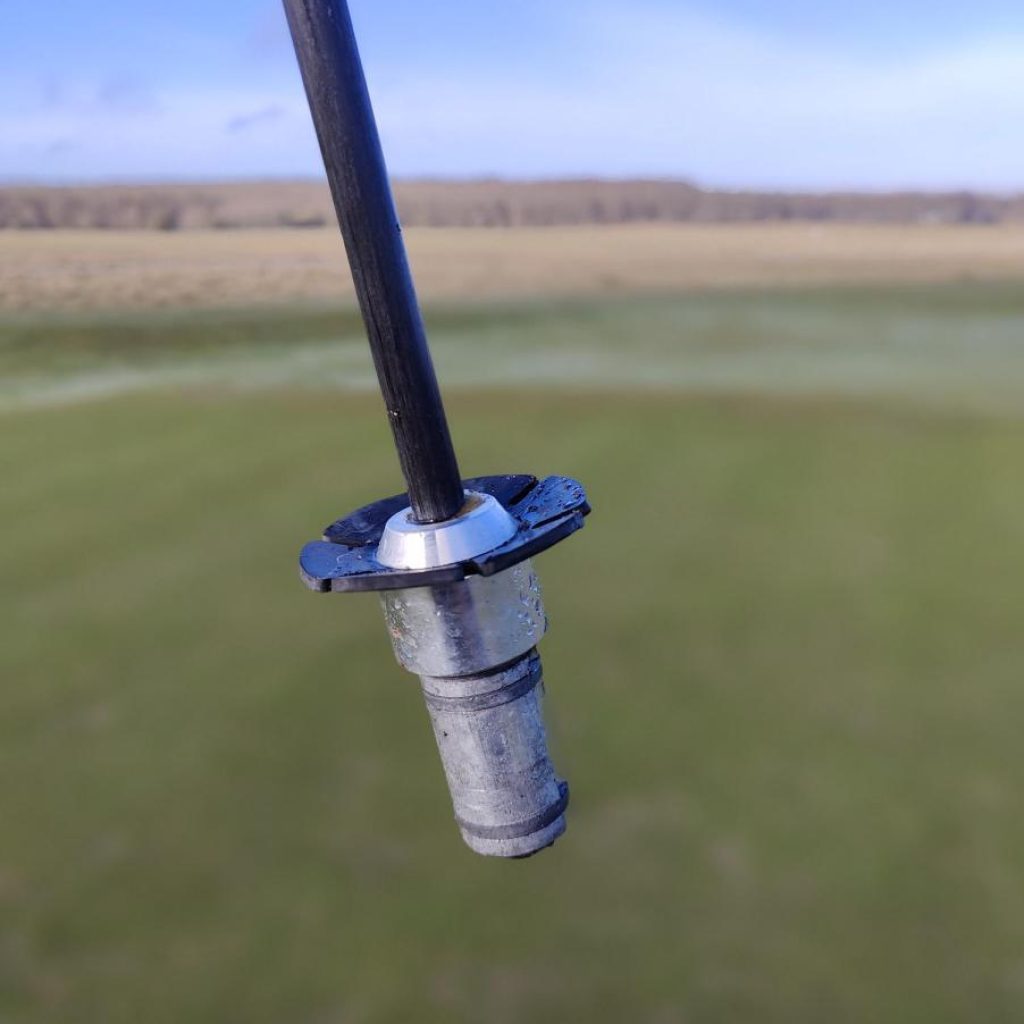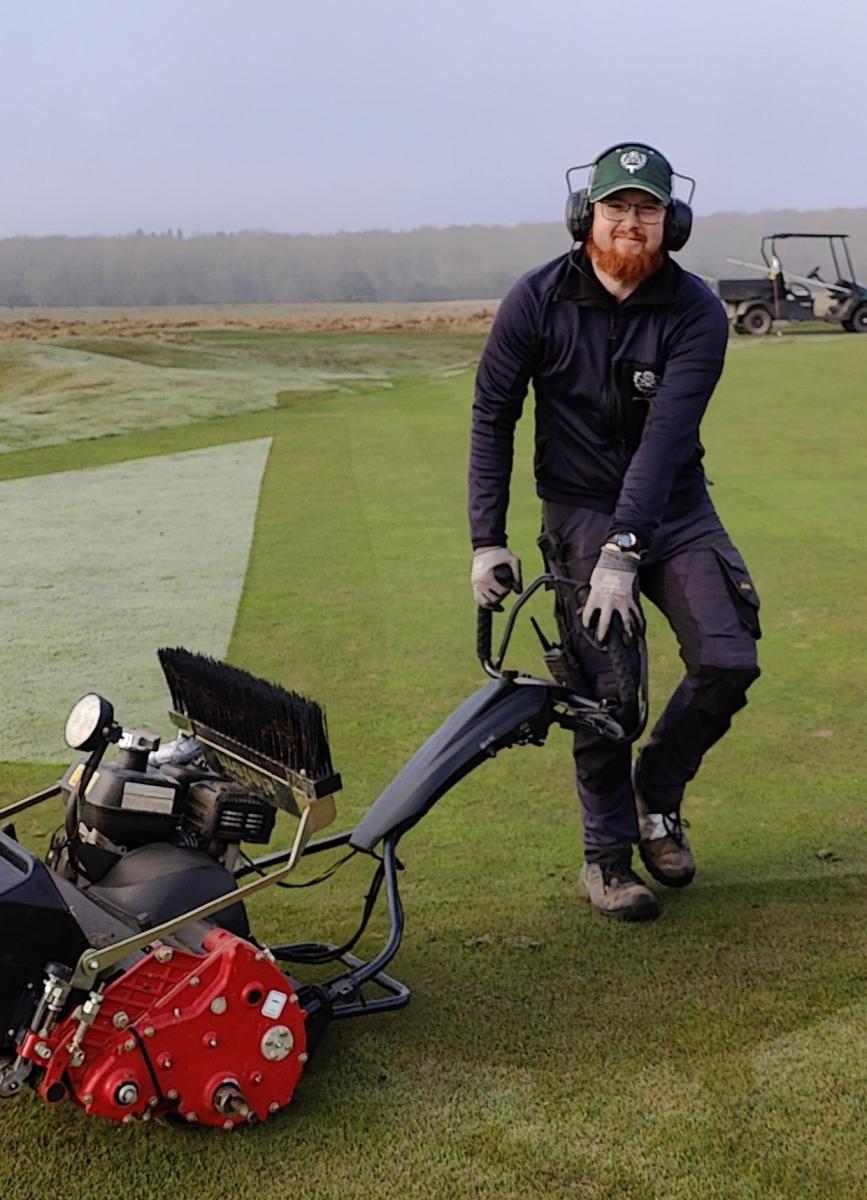Water and sand. That's what this past March was all about. Lots of rain from above and sand on the greens and green surroundings, where the greenkeepers were caught in the bad weather. It's great to get some of the heavy maintenance tasks "out of the way" before the season really starts, but this time it didn't go as well as in the past. I've tried this for 18 seasons and only a few times before have we been so unlucky with our work that it couldn't be completed satisfactorily. I'm sorry.
April always starts cold and windy, but can accommodate plenty of sun and it is also the driest month of the year. Cold and drought are not the best combination when you as a greenkeeper want to get the course up and running as quickly as possible because the players are queuing up and wanting to go out and enjoy the good weather. It is not until the end of April that the temperatures are so high that the grass can start to repair the wear and tear from play. That is why we often see that April is one of the hardest months of the winter in terms of wear and tear. The course is still playable and we enjoy using it all year round, but there are many areas we still have to be careful not to get into play too quickly.
Our putting greens, 1st and 18th greens are slow to become playable after winter. The driving range is wet and makes it impossible to collect balls without getting stuck or smashing too many balls into the ground. We are monitoring the conditions daily and will open as soon as possible.
The mat order is still active, although we are rapidly approaching playing with regular pitches until the grass can really bear it.
Keep an eye out for announcements in the club or online.
We have just finished top dressing the fairways. This year in a new way so that we do not play in the sand for so long. Since we started our fairway program a few years ago, we have annually spread about half a centimeter of sand on the fairways in March. In terms of growth, the timing is not ideal because it takes a long time for the grass to grow through the sand layer. But the rationale was that our fairways were so damaged by winter play and deer damage that it did not make a difference. But conditions have changed. Last year and this year the fairways are less damaged than in previous years because our program consisting of sand, seeds and fertilizer is starting to work. This year we will therefore copy the usual top dressing practice to a greater extent with less sand but spread more frequently. The total amount of about 600 tons will be the same and maybe even exceeded if all goes well.

On the greens you will experience a new initiative this year. A rosette has been installed on the bottom of the flagsticks. Ready golf is fine, but now that we have to leave the flagstick in the hole when we putt, it means that the wear on the hole edge has increased because we want to have our hand in the cup while the flag is in it. During the pandemic, we had pipe insulation installed so that we did not have to touch the flagstick and many people, including the greenkeepers, liked that solution.
The rosette is approved by the USGA and R&A, so now you can choose to putt with the flag in and then pull up on the flagstick so the ball dumps out and then without the hole edge being damaged. Smart. We hope you like the idea.
In April and May, some bunkers will be renovated. The deer have been hard on the bunkers as always throughout the winter. When the bunker has new grass edges, the grass must have time to grow firmly before we can open it for play. You golfers respect a ban on playing, but the deer do not. That is why we leave large driving plates in the bunkers that the deer do not like to step on and in this way we reduce the level of damage. Some members have got the impression that the greenkeepers are lethargic or forgetful since we leave plastic plates in the bunkers for weeks, but, sorry, we are not. We carry out our work within the very special framework that Dyrehaven gives us.
Good start to the warm part of the golf season.
Martin Nilsson, Chief Greenkeeper

